Here’s a detailed article on How to Grow Nemesia that will help you to grow this beautiful plant with multicolor blooms!
The Nemesis genus contains over 50 species, and most of these plants are native to South Africa. These flowers are easy to grow and can be a wonderful addition to any home and garden. Let’s have a look at How to Grow Nemesia easily!
Check out the stunning flowers that start with ‘N’ here
Nemesia Plant Information
Nemesia strumosa is a true annual that displays white or blue flowers and can grow up to a foot tall. However, Nemesis caerulea is a tender perennial that can produce one and a half inch flowers in pink, white, cherry, golden-yellow, blue, purple, and bi-color.
The plants feature leaves in the lance shape that appear in pairs along the stems, and the flower looks similar to snapdragons. The plant can bloom from spring to fall with bountiful flowers if the temperatures remain mild.
Have a look at white flowers pictures from Instagram here
Popular Varieties of Nemesia
You can choose between hybrid cultivars and pure species whenever you want to grow this stunning beauty in your garden.
1. Sea Mist
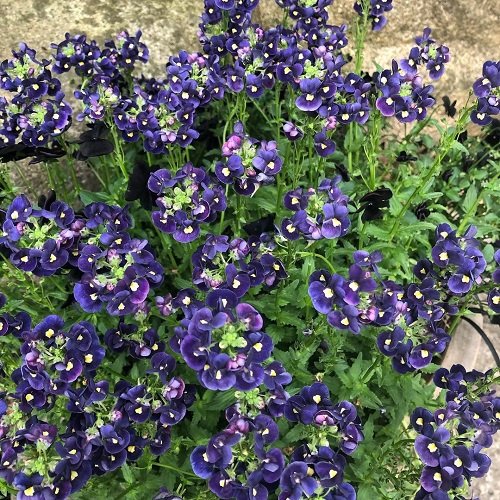
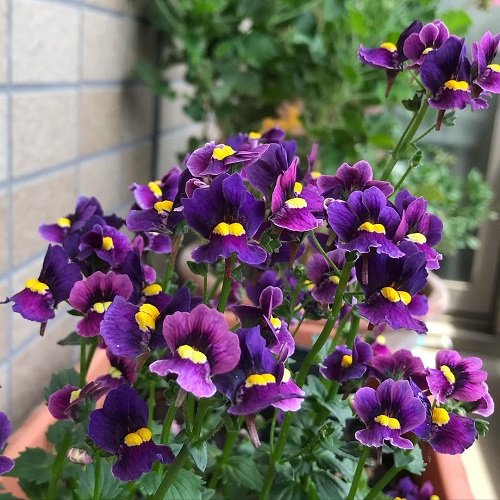
Nemesis caerulea ‘Sea Mist’ forms a dense, thick mat on the ground up to 16-18 inches. The pale purple flowers bloom from spring to fall.
Find out the best winter flowers here
2. Carnival
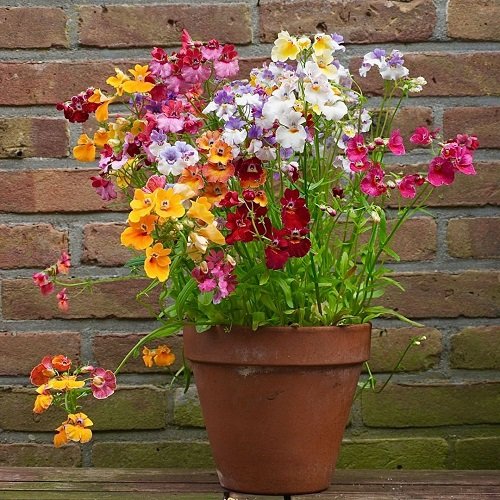
Nemesia strumosa ‘Carnival’ displays flowers in shades of purple, yellow, pink, orange, and white.
3. Versicolor

You can find Nemesia versicolor in a wide range of colors like blue, white, lilac, and yellow.
4. Shooting Stars
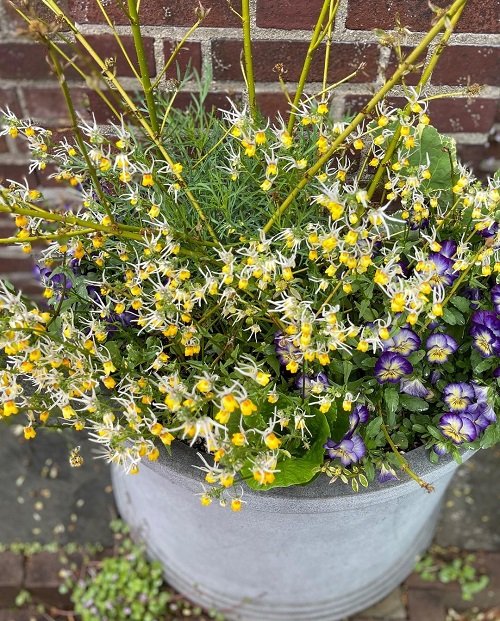
This species produces exotic, unusual yellow blooms with tall white spurs.
5. Floribunda
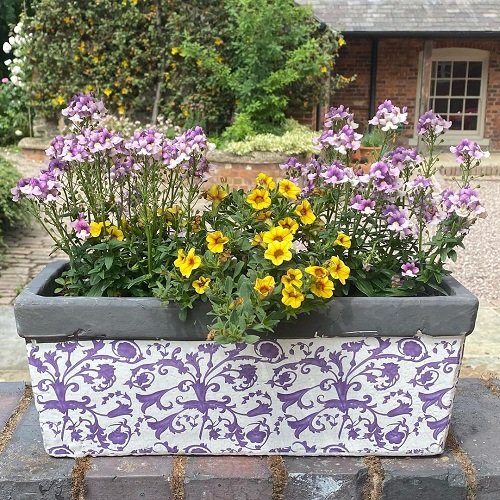
Nemesis floribunda can grow up to 12-15 inches tall. It produces fragrant white blooms with yellow-colored throats.
Some other popular hybrids are Ice Pink, Berries and Cream, Sunshine, Wisley Vanilla, Opal Innocence, Tropical, Rhubarb and Custard, Aromatic True Blue, Bluebird, and Sunsatia Cranberry.
Planting Nemesia
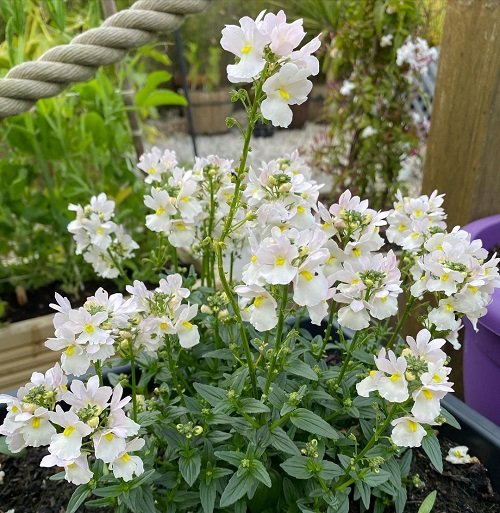
The best time to sow Nemesia seeds is in summer, late spring, or when all the dangers of frost are over. The ideal temperature is 60-75°F or 15-23°C for germination. The best planting time for tropical and sub-tropical climates is fall and winter.
After sowing, seeds take 5-10 days to germinate, and you can transplant the plant when it has at least 3-5 leaves. It is suitable for a terrace, balcony, patio garden, hanging baskets, urns, decorative bowls, and small containers.
Check out the best trailing foliage plants for hanging baskets!
Propagating Nemesia
Nemesia can be easily propagated via stem cuttings. Take a 4-6 inches long stem and plant it in a pot filled with a well-draining potting mix. Water well and place the container where it gets plenty of bright but indirect light.
Here are the most fragrant flowers you can grow
Growing Requirements for Nemesia

Sunlight
Plant Nemesia in a spot that is sunny with full light. For the best flowers, make sure it gets a minimum of 5-6 hours of bright and direct sun every day.
Avoid keeping the plant in the shade, as it will result in fewer or no blooms.
Soil
Grow Nemesia in well-draining, moist soil that is rich in organic content. To improve drainage, you can amend the soil using vermiculite, perlite, or sand.
Watering
Water your gorgeous Nemesia deeply and regularly when the topsoil feels a little dry to the touch. Avoid overwatering, as excess water can cause stem and root rot. Do make sure that you are never letting the soil go dry completely.
Temperature
Nemesia loves cooler temperatures and thrives best in mild summer temperatures. The best range of temperature for your Nemesia is 55-75°F or 12-23°C. This plant can thrive well as annuals in winter if you live in a frost-free place.
Learn the best hacks to increase indoor humidity here
Nemesia Care
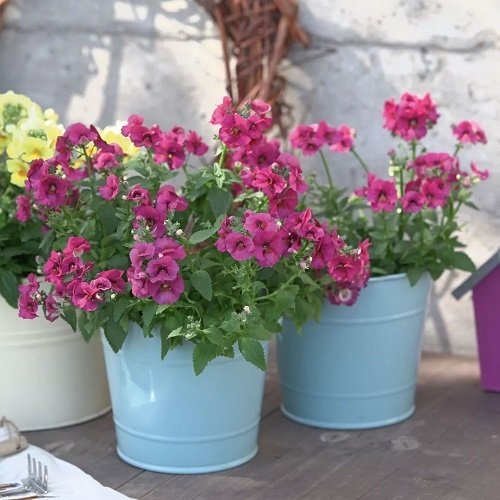
Fertilizer
Feed the plants using a balanced liquid fertilizer, diluted to 1/2 of its strength, once in 6-8 weeks. Avoid feeding it every week, and also refrain from fertilizing the plant in winter.
Pruning
Deadhead spent flowers to stimulate new buds. If it is grown as a perennial, cut back the plants as short as possible for overwintering.
Pests and Diseases
Although Nemesia does not suffer from severe pest issues, it can get attacked by powdery mildew and root rot. You can keep these issues at bay by keeping it in plenty of sunlight and good air circulation.
Learn some DIY insecticidal soap recipes here
Nemesia Companion Plants
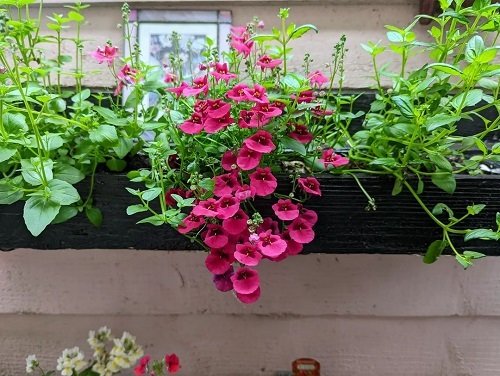
You can find Nemesia plants in several varieties in a wide range of colors of flowers that look similar to orchids. The best companion plants of Nemesia are:
- Snapdragons
- Lobelias
- Pansy
- Daffodils
- Hydrangea
- Tulips
- Verbena
- Viola Tricolor
- Dwarf golden arborvitae
Learn the best plants to grow with Basil here
Is Nemesia Poisonous to Dogs and Cats?
Nemesia is not toxic to cats, dogs, and children. Although it is not dangerous, it is not a food source either, and your pets and children should be careful not to ingest it. Overeating can cause an upset stomach, abdominal pain, vomiting, and nausea.




I love the rectangular stones pictured in the photo of a raised garden bed with white ?pink and purple nemesia growing . What type of stones are they, it looked like they are stacked without mortar?
Thank you for a nice article!
Does anyone know what type of stones these are in the photo of nemesia— and are they held together with mortar?
Thanks!!
They are just cement Bricks with white lime powder painted on it.